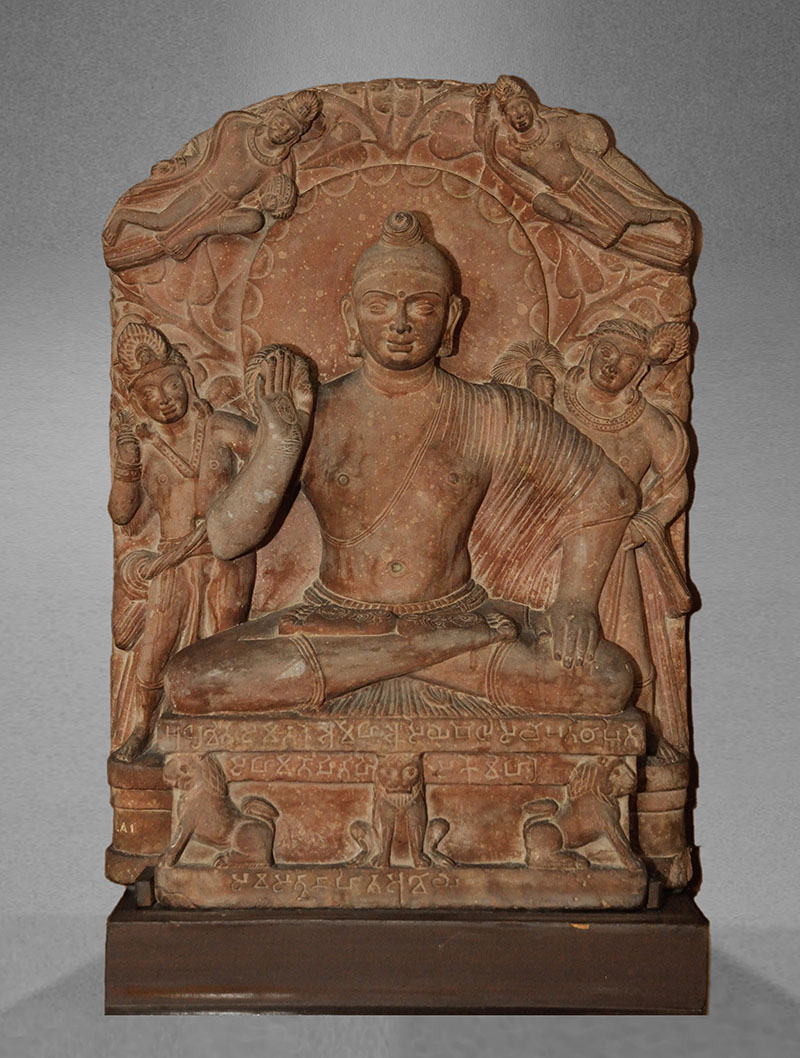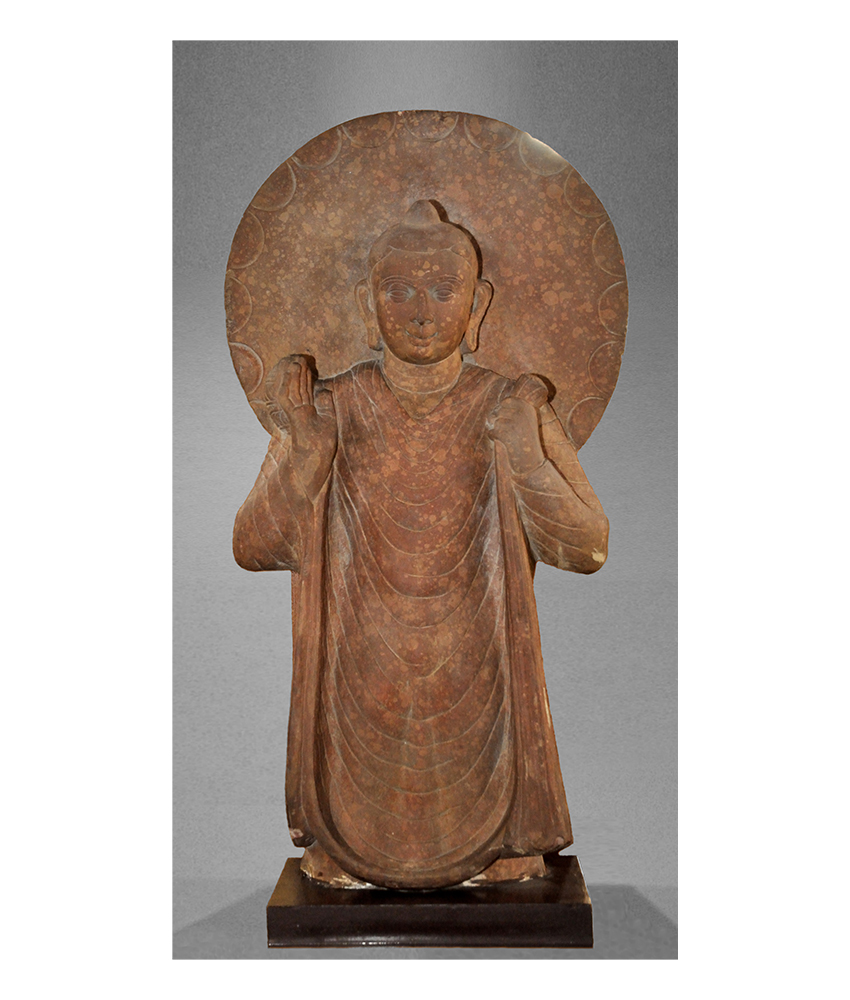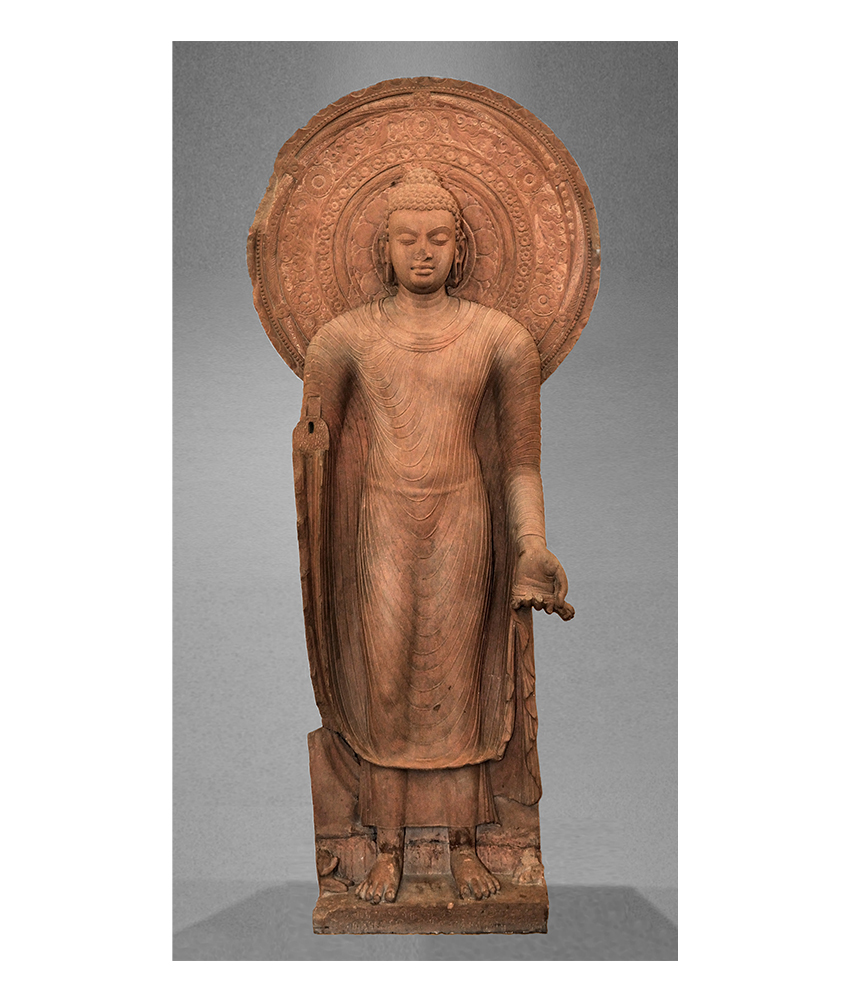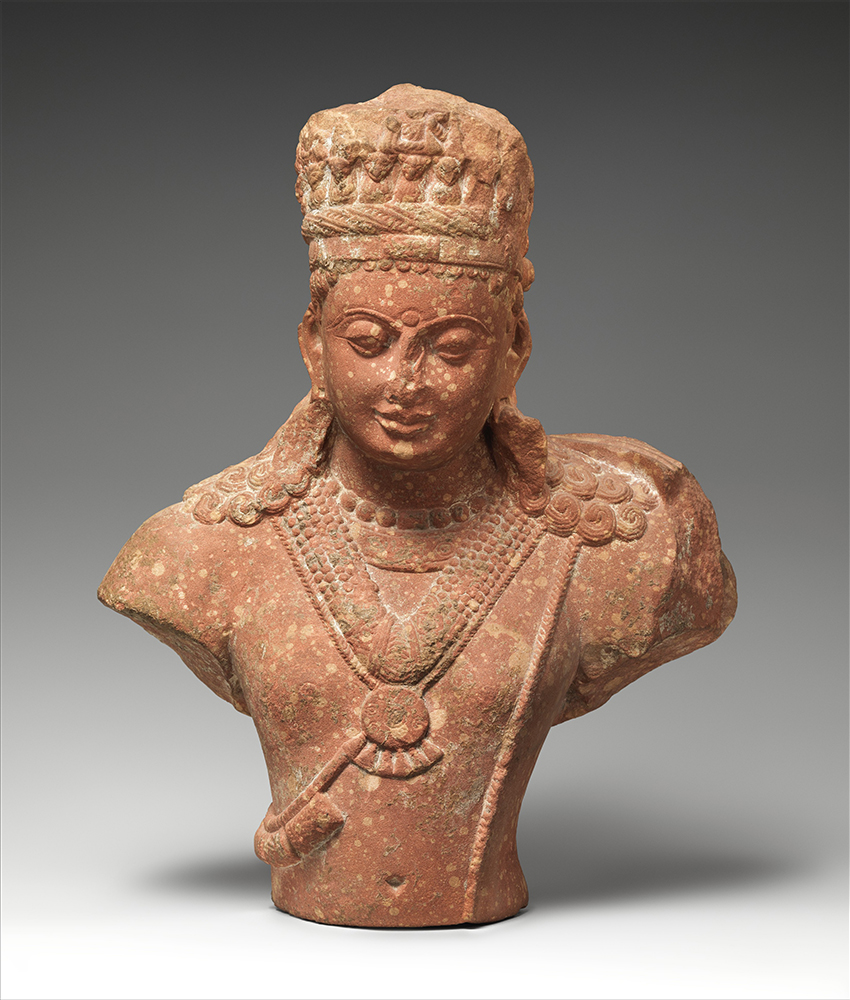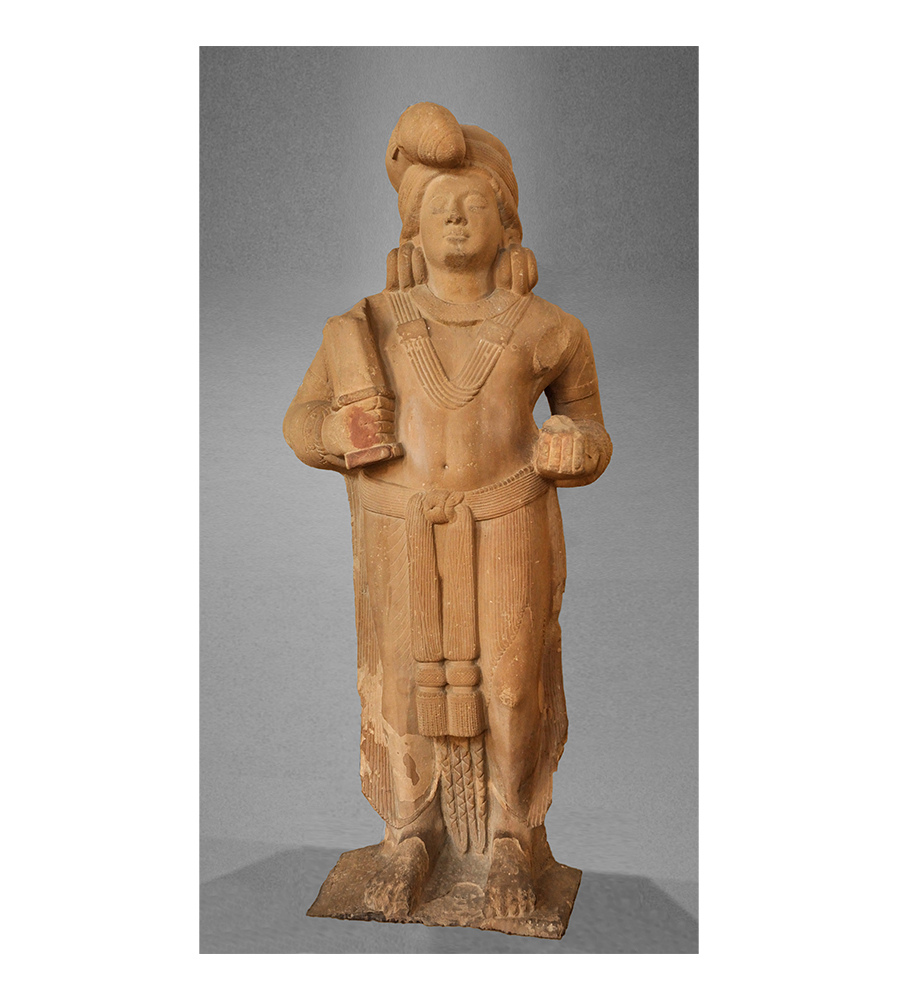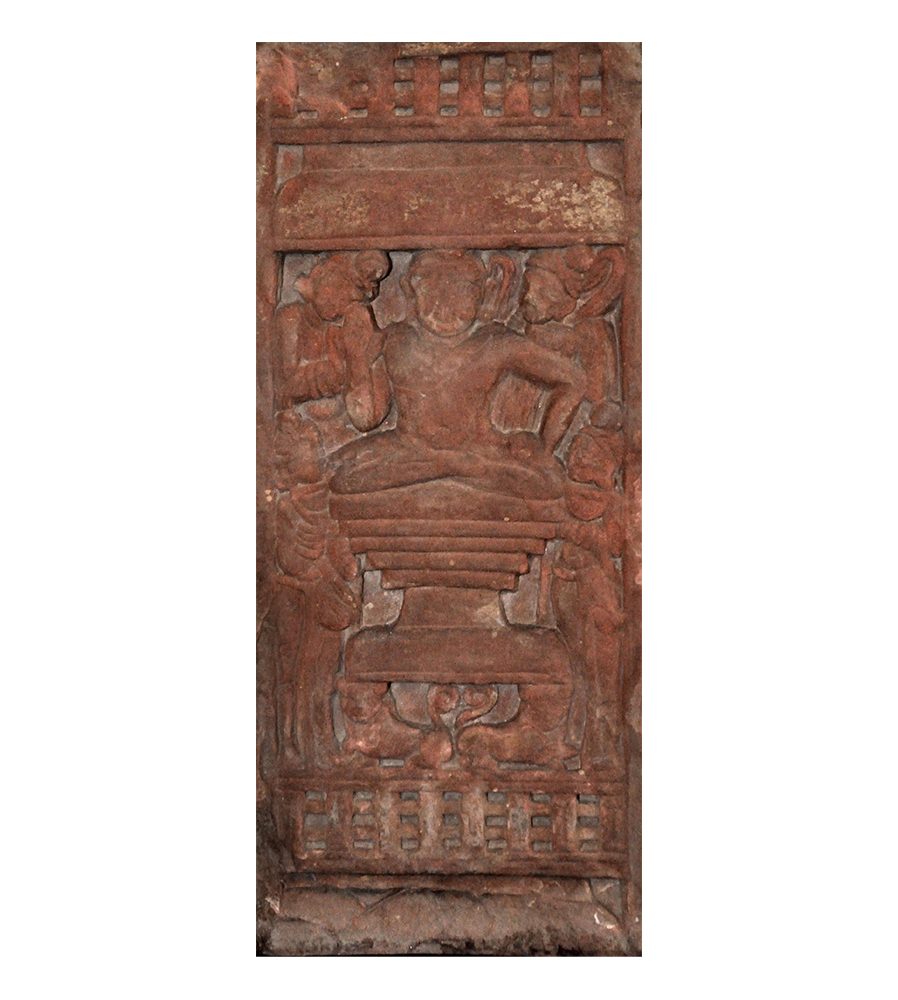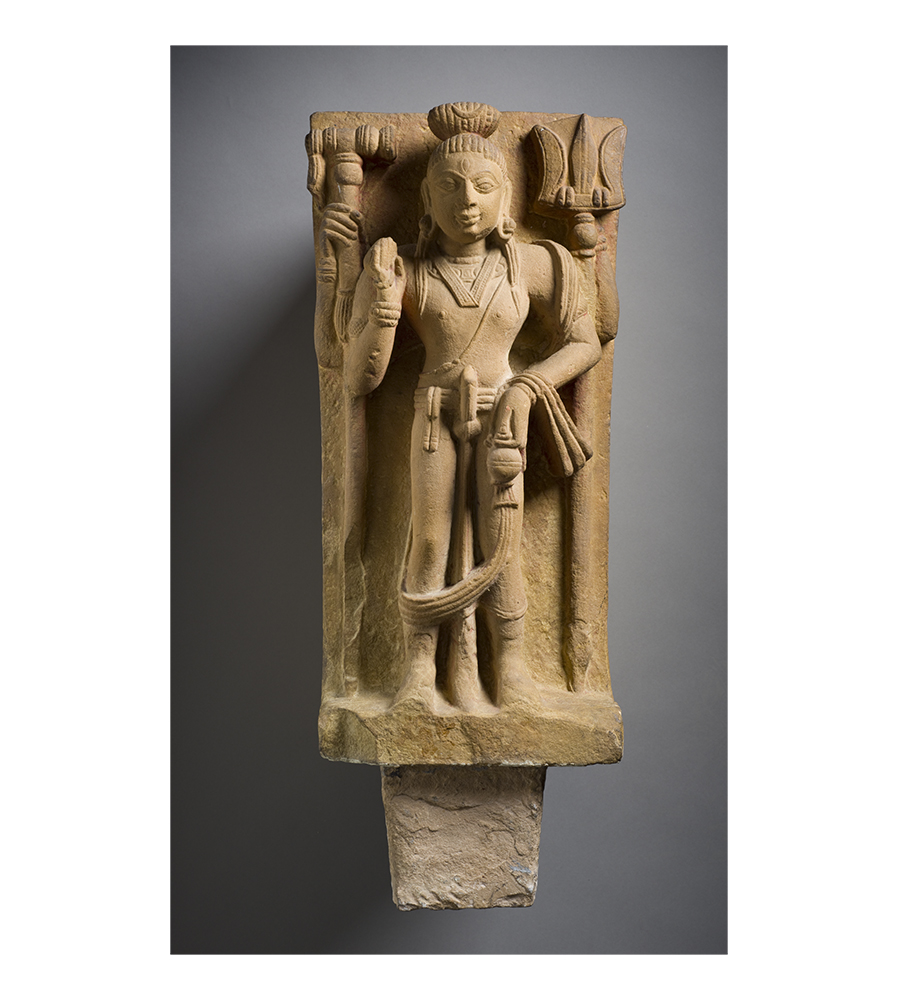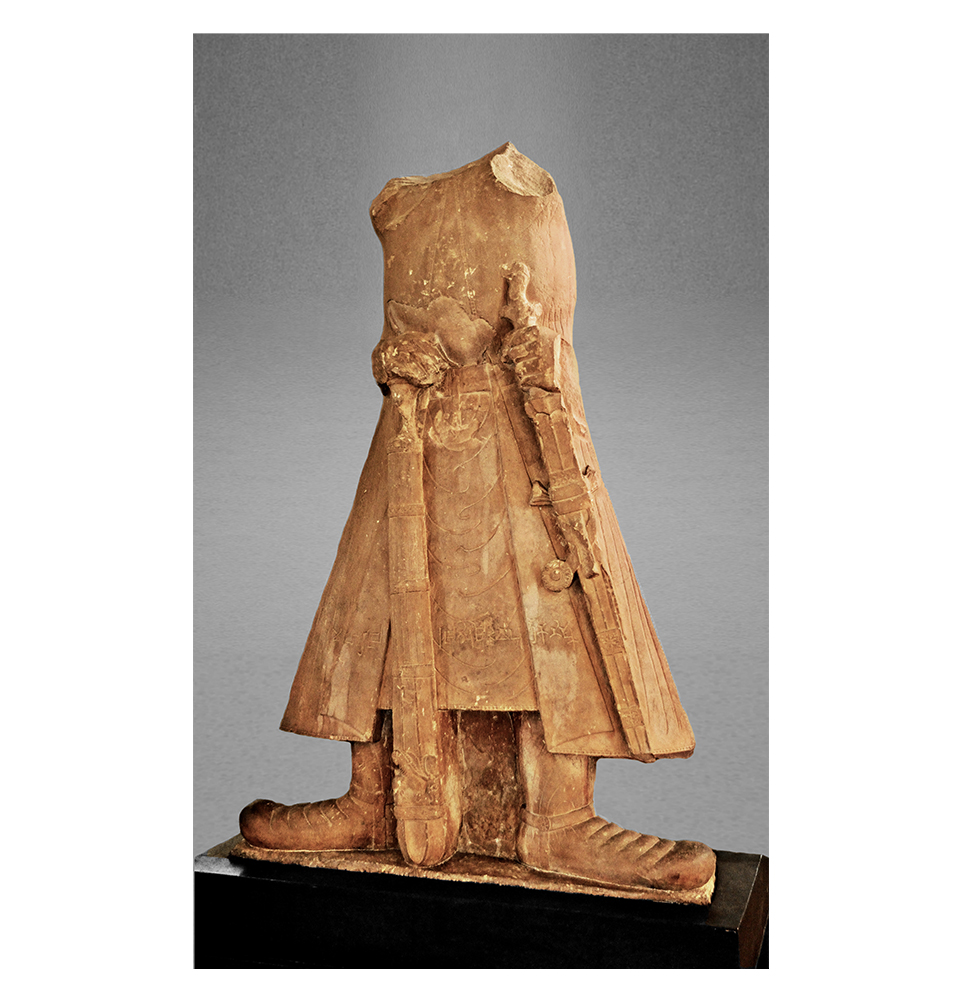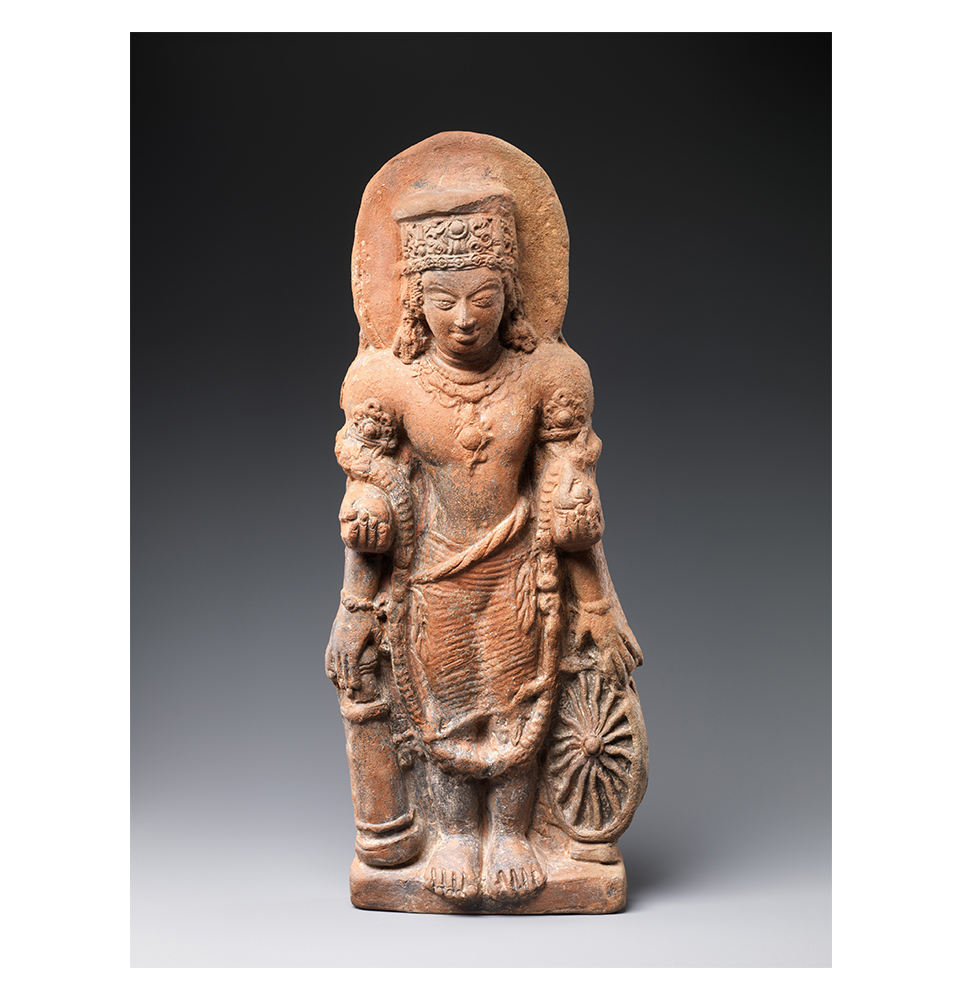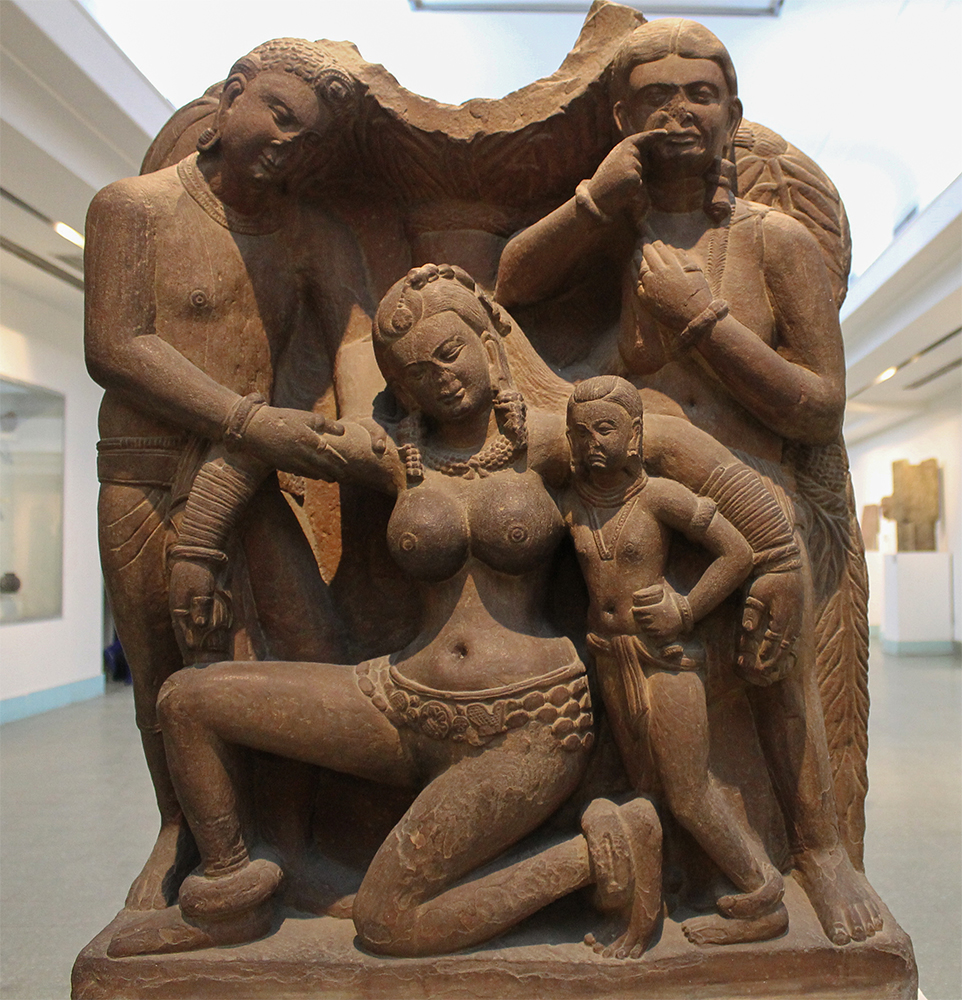ARTICLE
Sculpture at Mathura
The earliest stone sculptures of the region are colossal yaksha, yakshi and naga deity images, some rising to a height of about two metres. The most prominent of these is the Parkham yaksha, at 2.59 metres high, made around the first century BCE, which is noted for its frontal, heavyset figure and posture with a relaxed leg. This iconographic style formed a major influence for later representations of religious figures. Another image depicts a yakshi seated on a stool with both legs hanging down in the European style, forming the earliest Indian example of this posture. Mathura has yielded the highest number of iconic images — dated to between 150 and 75 BCE — for any single region of the subcontinent, underlining the strong prevalence of communal cult worship in this period. The trend of colossal images declined around the turn of the millennium, but smaller later sculptures of these figures suggest that the worship of these cult deities continued for longer. Apart from iconic figures, the remnants of stupas, in the form of railings and gateways, show the artistic influences of Bharhut and Sanchi.
The depiction of the Buddha and tirthankaras in anthropomorphic form had begun in Mathura several years before the arrival of the Kushans. An example of this is the image known as the Isapur Buddha, a relief carving on a railing fragment dated to between the first century BCE and the first century CE. In the relief, the Buddha is shown seated with his legs loosely crossed and his hand in the abhaya mudra gesture, with an ushnisha and halo, in a style that appears more influenced by local traditions than Gandharan ones. Scholars suggest this image is indicative of early experiments that drew on existing practices of representing tirthankaras or ascetics in sculpture and on ayagapatas or votive tablets — which, however, did not depict any nimbus or halo until the first century CE.
Kushan rule in the area, from roughly the first to the third century CE, is considered to be the most prolific period of Mathura sculpture. In terms of Buddhist images, this period was defined by sculptures of the Buddha in seated and standing postures, and images of bodhisattvas. Depictions of the Buddha early into Kushan rule carried forward the influences seen in the yaksha statues and images like the Isapur Buddha, particularly in the corpulent modelling of the body, with wide shoulders and deep navels. In the standing posture, the feet are placed apart and the space between them filled by a lion or a lotus. In the seated posture, the soles of the feet are adorned with the triratna and dharmachakra symbols. The otherwise bare head shows only the kapardin, a coiled tuft of hair, while the forehead is depicted with a protrusion between the eyebrows, called the urna. The upper garment is typically draped over the left shoulder and the left arm rests on the hip or thigh. While the Buddha is depicted with upper and lower garments, bodhisattvas are shown with ornaments. A stele recovered from the Katra mound contains the most famous seated Buddha image from this period, which has been extensively replicated. Another well known example of the standing Mathura-style Buddha is the colossal statue in Sarnath, with an inscription that dates it to the early years of Kanishka’s reign. In terms of narrative sculpture, reliefs from this period depict scenes from the life of the Buddha and the Jatakas, while architectural remains reveal sculptures of salabhanjika figures, apart from animal and floral motifs. By the second century CE, Buddhist imagery of Mathura had absorbed Gandharan influences, the most prominent being the depiction of the hair in short curls and a robe covering the whole body, along with changes in hand gestures.
In terms of Hindu imagery, while lingam worship had already been depicted in a relief from the site of Bhuteshvar dated to the second century BCE, under Kushan rule the linga was shown in the mukhalinga form, with faces emanating from it, along with depictions of Shiva with Nandi and Parvati, and Ardhanarishwara. Mathura also became the leading centre of Vaishnava sculpture. The Mora Well inscription, dated to the first century CE, indicates the presence of a temple dedicated to the Vrishni deities. Under the Kushan rule, the iconography of a four-armed Vasudeva-Krishna, bearing a conch and mace, was also developed. Vaishnava images of the period also included depictions of Vishnu avatars including Varaha and Trivikrama. Other depictions of this period include Surya, Kartikeya, the Saptamatrikas, Mahishasuramardini, Lakshmi, Sarasvati, Aryavati and Durga.
A variation in Jain sculptures of the period, in addition to the seated and standing postures of the tirthankaras, was the sarvotabhadrika image, in which four tirthankaras were carved on four sides of a pillar, indicating the four cardinal directions.
In terms of non-religious sculptures, significant examples have been found from the devakula, or royal shrine, of the Kushans at Mat, with sculptural figures identified as Kushan rulers. They are dressed in their typical costume, a heavy coat with trousers and boots, with some also donning a Central Asian-style headdress. Reliefs of Bacchanalian scenes, depicting what is believed to be the figure of Silenus, and a sculpture of Herakles battling the Nemean Lion — themes originating in Greek art and mythology — indicate the global scale of artistic influences at Mathura.
After the decline of the Kushans, the next significant political power in the Mathura region was the Gupta dynasty (fourth–sixth century CE). While sculptural images continued to be made in Mathura, the region was no longer considered the prime centre of art. There was also a distinct change in the physical appearance of the figures depicted. The stockiness of the Kushan images was replaced by a more slender form, with Buddhist, Hindu and Jain images showing an elongated head and body; the eyes were carved with a lowered gaze to depict an inward-looking expression. Foreign influences are seen in the depiction of Surya, the sun god, and his attendants Pingala and Danda according to Iranian ideas. Surya is shown seated on a chariot drawn by two or four horses, while his attendant Pingala is shown with a knotted beard and wearing a kulah cap with a crescent and globule symbol, in the Sassanian style.
Although sites like Kankali Tila remained active well into the medieval period, Mathura after Gupta rule was marked by a decline in sculptural art. Scholars attribute this to the invasion of the city by the Hunas in the fifth century CE. In this period, the typical red sandstone used for Mathura sculpture was replaced by a buff-coloured stone. The sacking of Mathura by the armies of Mahmud of Ghazni in 1018 CE was a severe blow, marking the end of the region’s era of sculptural development.
Today, the sculptures of Mathura are found in the collections of various museums, including the Government Museum, Mathura; the State Museum, Lucknow; the National Museum, New Delhi; the Metropolitan Museum of Art, New York; and the British Museum, London.
Bibliography
Agrawala, Vasudeva S. Masterpieces of Mathura Sculpture. Varanasi: Prithvi Prakashan, 1965.
Bajpai, K. D. “The Kusana Art of Mathura.” Marg 15, no. 2 (March 1962): 27–42.
Gottfried Williams, Joanna. The Art of Gupta India: Empire and Province. New Jersey: Princeton University, 1982.
Harle, J. C. The Art and Architecture of the Indian Subcontinent. New Haven: Yale University Press, 1986.
Huntington, Susan L., and John C. Huntington. Art of Ancient India: Buddhist, Hindu, Jain. New York: Weatherhill, 1993.
Quintanilla, Sonya Rhie. History of Early Stone Sculpture at Mathura: ca 150 BCE–100 CE. Leiden: Brill, 2007.
Singh, Upinder. A History of Ancient and Early Medieval India: From the Stone Age to the 12th Century. New Delhi: Pearson, 2016.
Srinivasan, Doris Meth. “Mathura.” Grove Art Online, 2003. Accessed January 10, 2023. https://doi.org/10.1093/gao/9781884446054.article.T055943.
Srivastava, V. N. “Gupta Sculpture at Mathura, circa 300 to 650 AD.” Marg 15, no. 2 (March 1962): 49–58.




